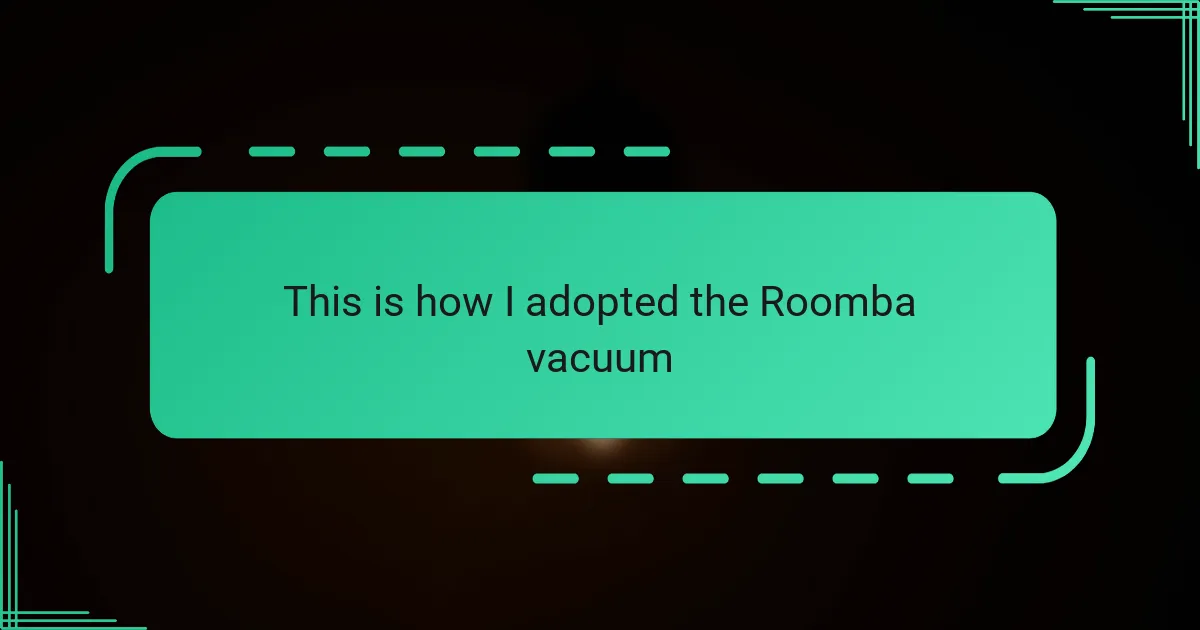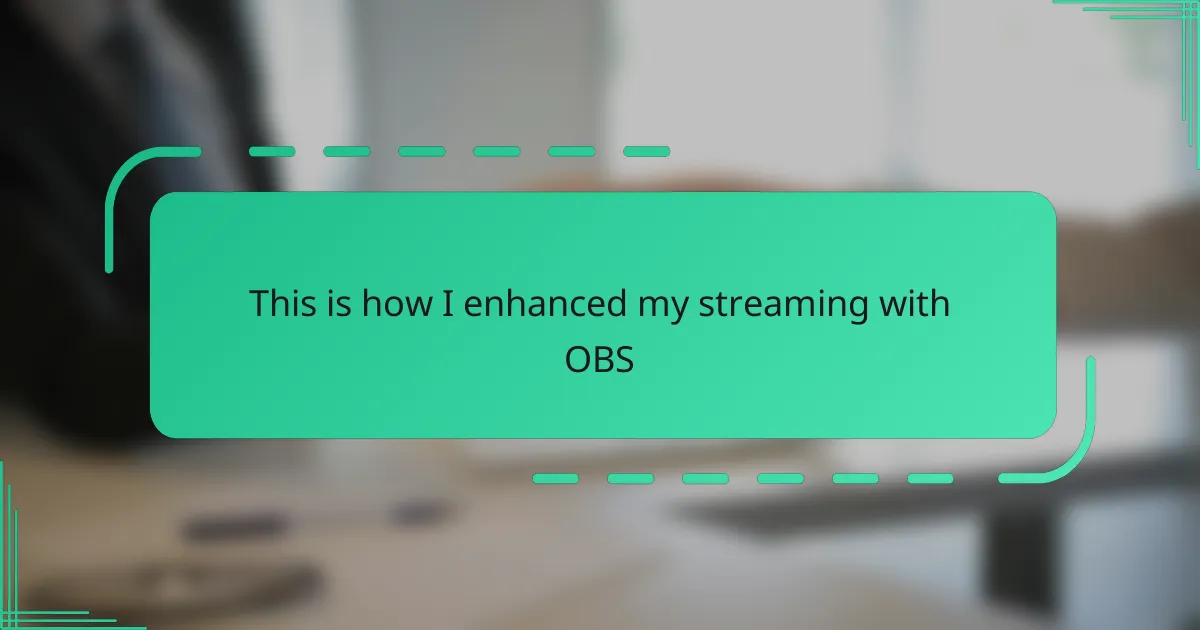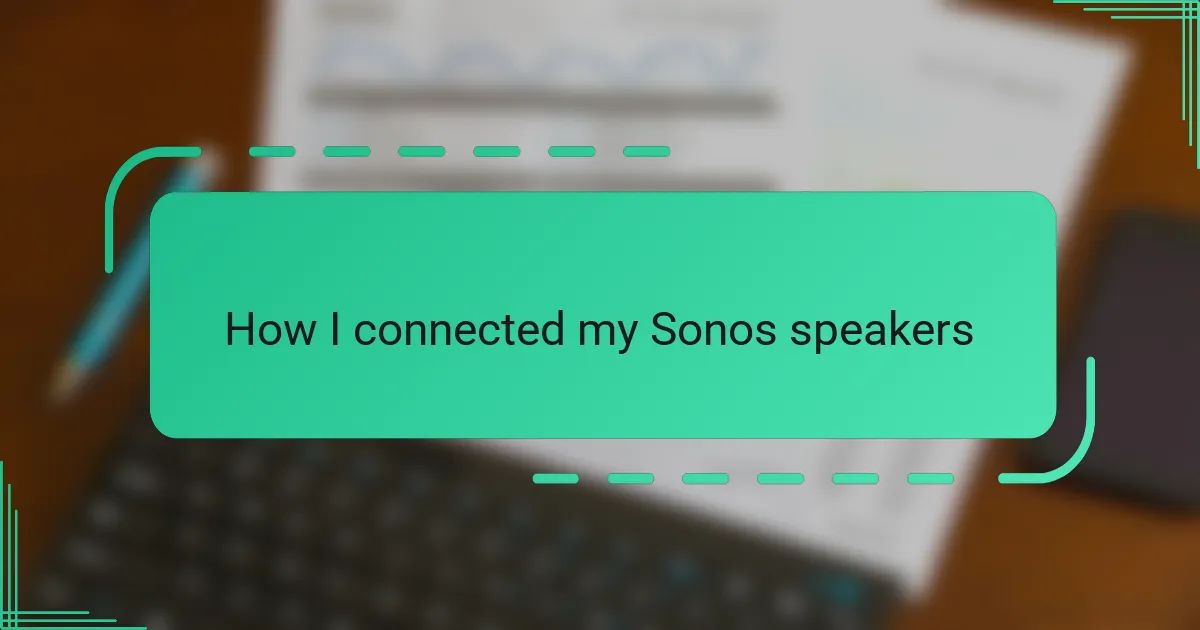Key takeaways
- A Roomba vacuum automates floor cleaning with smart sensors, adapting to various surfaces without user intervention.
- Setting up a Roomba is simple; it connects to Wi-Fi easily, allowing for remote scheduling and control.
- Regular maintenance, such as emptying the dustbin, enhances Roomba performance and efficiency in cleaning.
- Choosing the right model depends on individual cleaning needs, such as pet hair management and floor types.
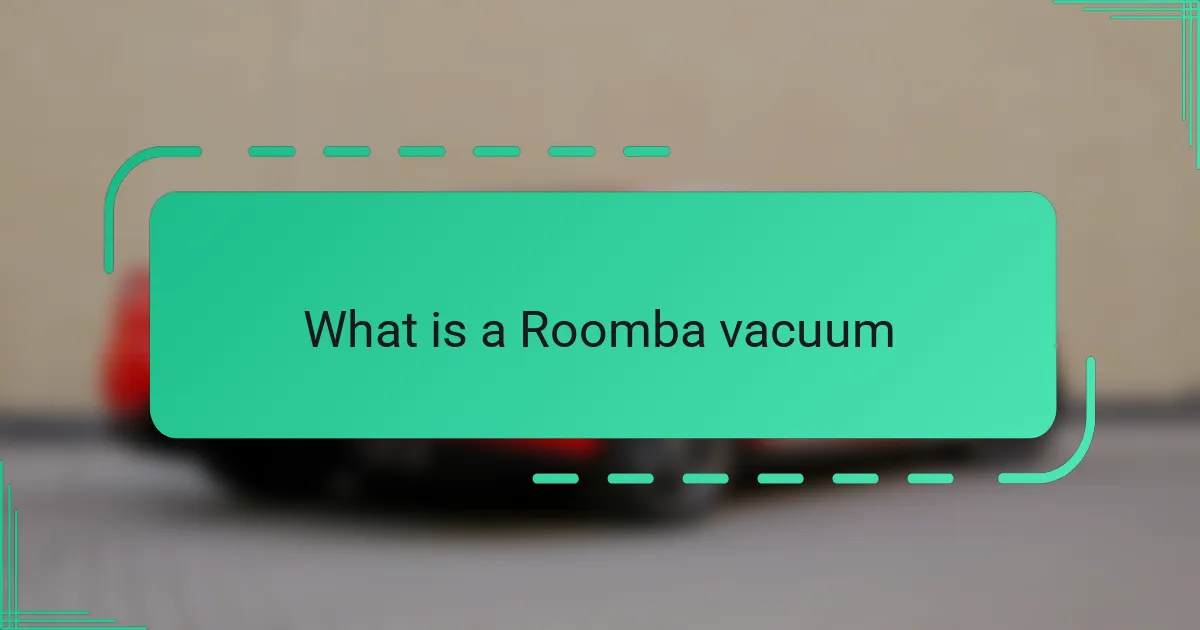
What is a Roomba vacuum
A Roomba vacuum is an innovative robotic device designed to clean floors automatically. I remember being skeptical at first—how could something so small handle the mess in my home? Yet, its compact design and smart sensors allow it to navigate around furniture and obstacles with surprising ease.
What really stands out to me is how the Roomba’s programming enables it to adapt to different surfaces and cleaning needs. Have you ever wished someone could just take care of vacuuming without you lifting a finger? That’s exactly what this little machine promises, turning a tedious chore into something almost invisible.
In my experience, the Roomba is more than just a gadget; it’s a shift in how we approach daily cleaning. It’s like having a reliable assistant who works quietly in the background, freeing up time for more meaningful activities. Don’t you think technology that simplifies life deserves a closer look?
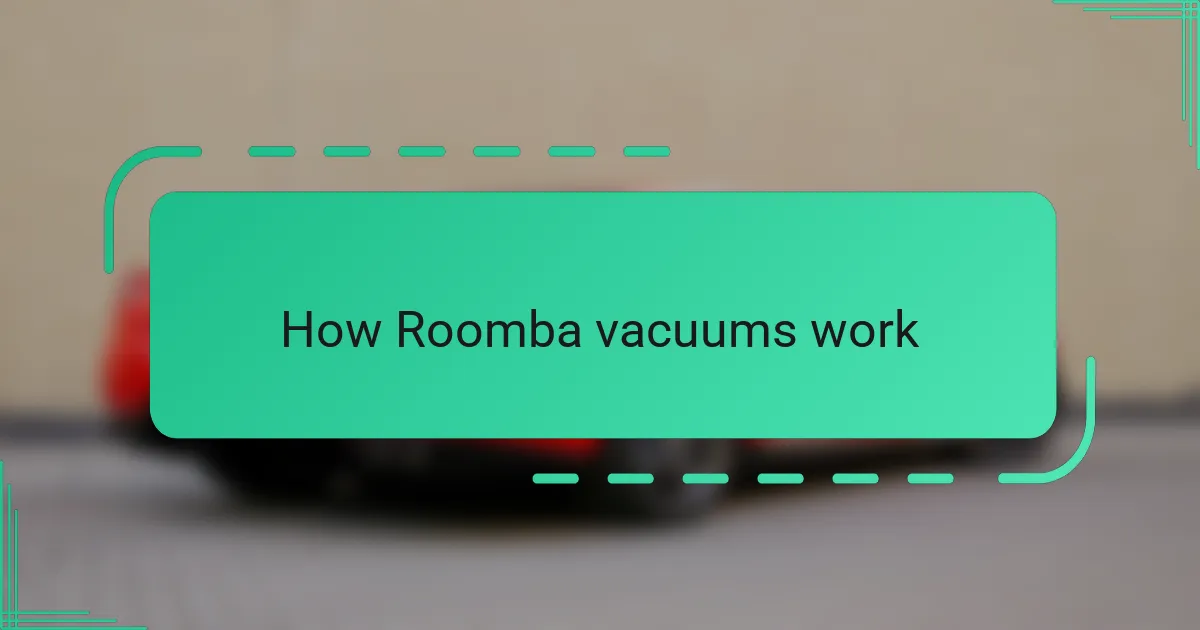
How Roomba vacuums work
The way Roomba vacuums work fascinates me—these little robots are packed with sensors that map out your room as they go. I once watched mine carefully avoid my cat’s favorite napping spot, which made me realize how smart these devices really are. Isn’t it incredible that something so small can adapt on the fly, adjusting its path to skip obstacles without missing a beat?
What surprised me most is the combination of brushes and suction it uses to tackle dirt on various floors. Whether it’s hardwood, carpet, or tile, the Roomba senses the surface and modifies its cleaning style accordingly. This automatic adjustment means I no longer worry about changing settings or moving furniture around before cleaning—such a relief in a busy household.
Have you ever thought about how a robot knows when its job is done? The Roomba uses algorithms to make several passes, ensuring thorough coverage, and then it heads back to its charging dock all on its own. Watching this little helper work tirelessly while I focus on other tasks makes me appreciate how technology truly steps in to make everyday life smoother.
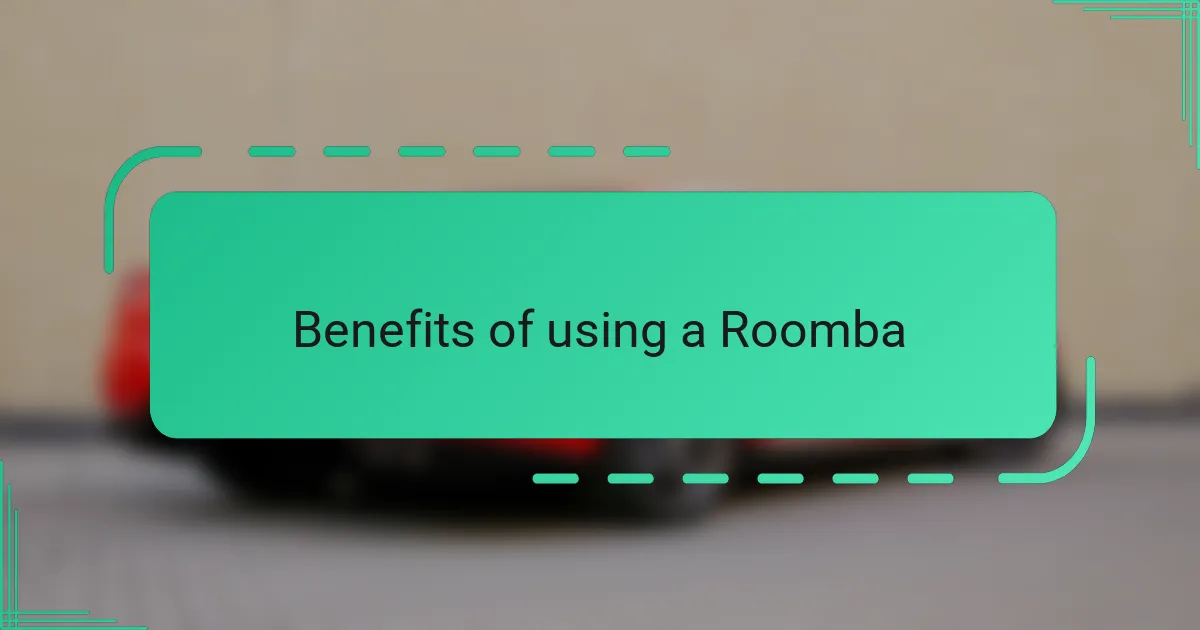
Benefits of using a Roomba
One of the biggest benefits I noticed with my Roomba is the sheer time it saves me. I used to dread vacuuming, but now, while it quietly cleans, I get to relax or catch up on work. Doesn’t it feel great when technology takes over a chore that used to eat up your day?
Another thing I appreciate is how consistent the Roomba is in its cleaning. I don’t have to worry about missing dust bunnies hiding under the couch because it methodically covers every corner and crevice. It’s like having a pet that cleans instead of shedding—only much quieter and less demanding!
What really impressed me, though, is the Roomba’s ability to handle different floor types without any effort on my part. From thick carpets to smooth tiles, it knows exactly how to adjust its cleaning mode. Have you ever wished for a cleaning tool that just works seamlessly no matter where you use it? That’s the kind of convenience I didn’t know I needed until I tried a Roomba.
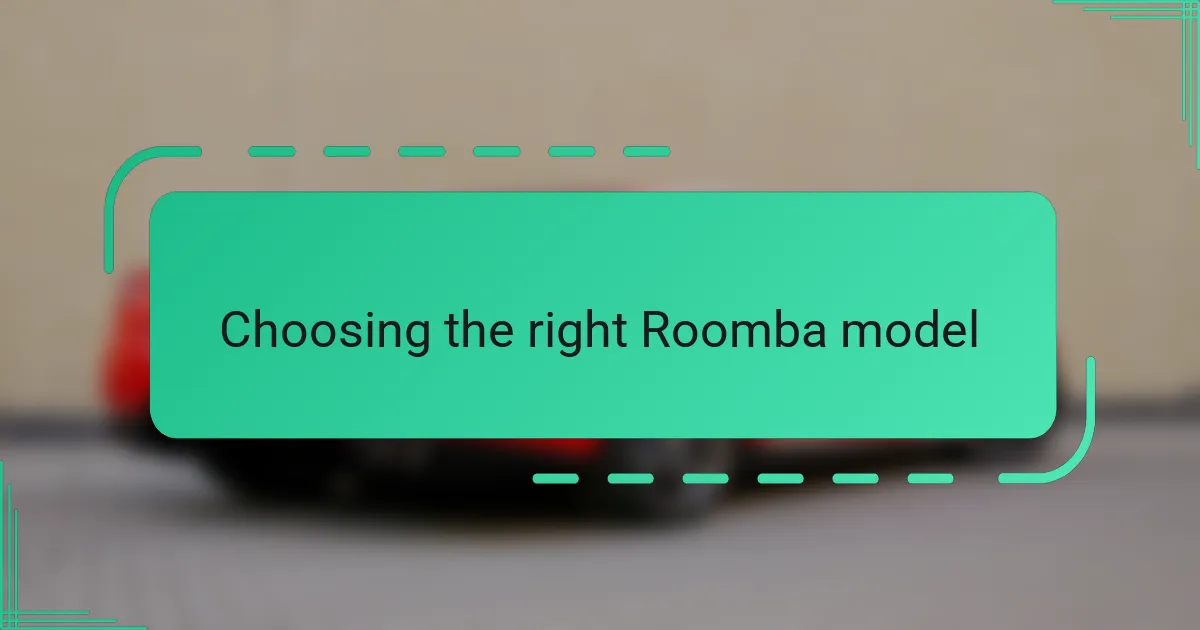
Choosing the right Roomba model
Choosing the right Roomba model felt overwhelming at first—there are so many options with varying features. I found myself asking: Do I need something simple for basic cleaning, or should I invest in a more advanced model with smart mapping and stronger suction?
What helped me decide was thinking about my home’s layout and my cleaning habits. For instance, if you have pets or carpets, models with better brush systems and allergen filters make a noticeable difference. I figured that spending a little extra on these specialized features would save me headaches later.
I also considered how much control I wanted over scheduling and app integration. Some Roombas let you set cleaning zones and times directly from your phone, which sounded like a dream for a busy schedule like mine. Have you tried managing chores remotely? Once you do, it’s hard to go back.
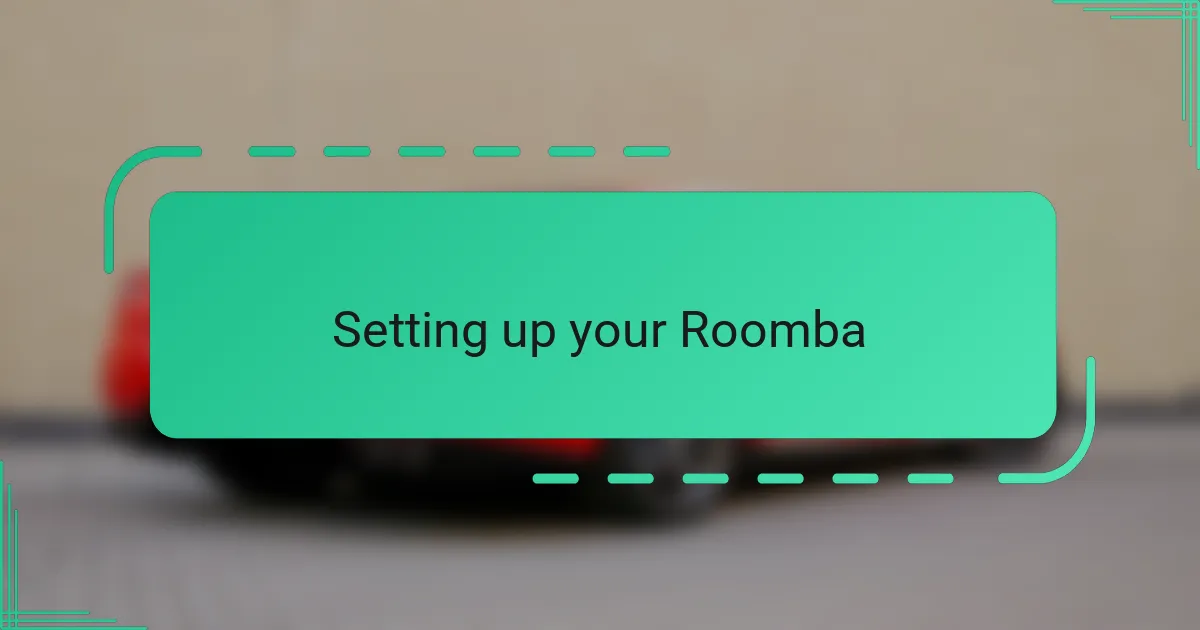
Setting up your Roomba
Setting up your Roomba was surprisingly straightforward for me, though I wasn’t expecting it to be that simple at first. I just had to place the charging dock against a wall in an open area—no tricky wiring or extra tools needed. Have you noticed how technology today makes even the “setup” seem effortless?
The next step was connecting my Roomba to the Wi-Fi network using the app, which took only a few minutes. I remember thinking, “This is it?” as the robot quickly registered and appeared ready to clean on command from my phone. The convenience of controlling cleaning schedules remotely was a game changer for me.
One tip I found useful was clearing any clutter or loose cords near the dock before the first run. It felt satisfying to watch the Roomba confidently navigate around my furniture without getting stuck. Don’t you love it when a device just works as promised right from the start?
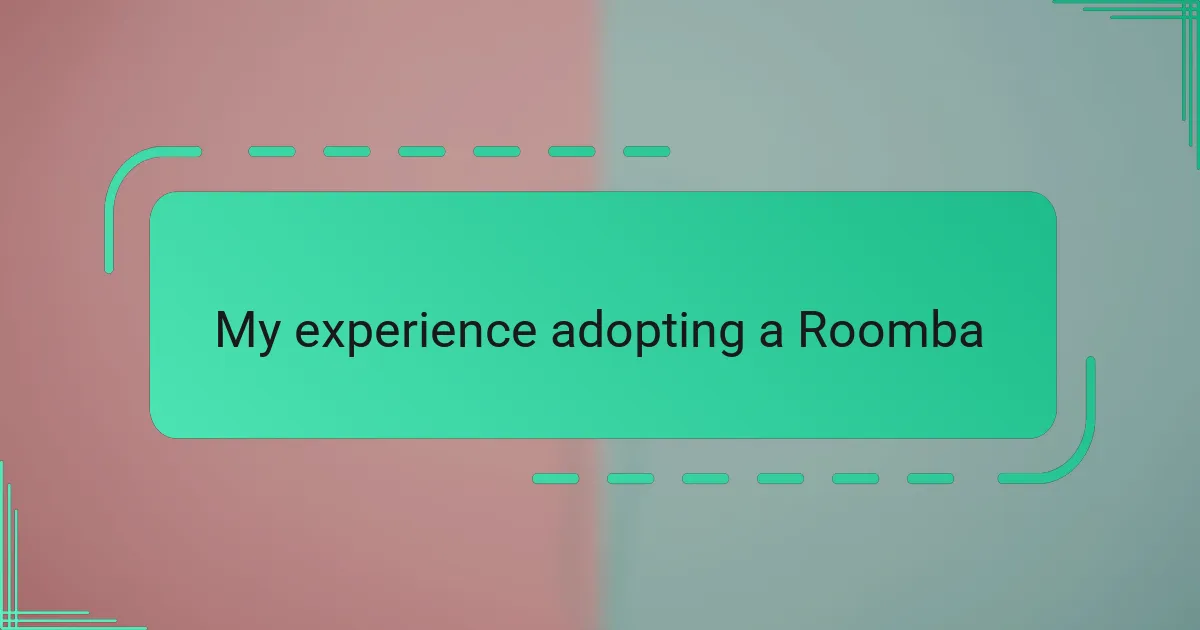
My experience adopting a Roomba
Adopting a Roomba was a mix of curiosity and cautious hope for me. The first time I pressed “start,” I was honestly holding my breath, wondering if it would really do the job without my constant oversight. Watching it glide effortlessly under my coffee table and around chair legs felt like witnessing a mini miracle in daily life.
I quickly learned that patience is key—there were moments when the Roomba got momentarily stuck or needed me to clear an unexpected obstacle. But each time, it seemed to learn and adapt better, almost like it was earning its place in my home. Have you ever felt a bit of pride when a gadget actually lives up to its promise? That’s exactly how it made me feel.
What struck me most was how the Roomba became less of a machine and more of a helpful presence. I found myself trusting it to maintain my floors regularly without having to plan around my hectic days. Isn’t it remarkable how a small device can shift the way you think about keeping your home clean?
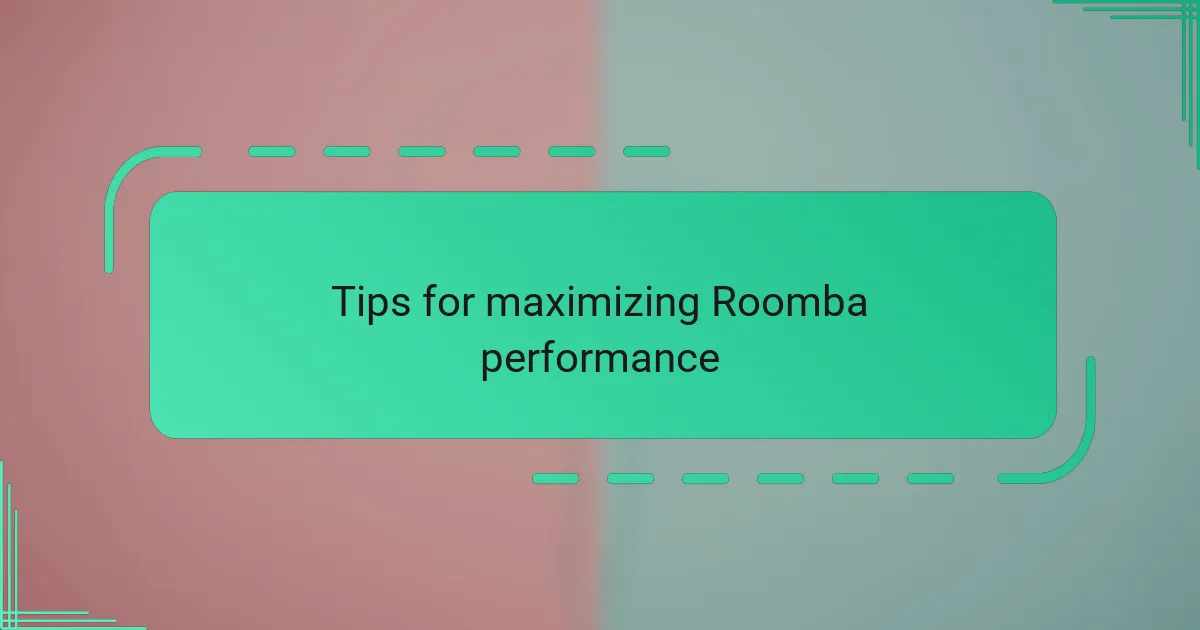
Tips for maximizing Roomba performance
One tip I quickly picked up is to keep the floor as clutter-free as possible before starting the Roomba. I’ve noticed that even small objects like socks or cables can really throw it off, leading to unnecessary pauses or getting stuck. Have you ever felt that little frustration watching a robot pause because of something avoidable? Clearing the path makes all the difference.
I also learned that regularly emptying the dustbin and cleaning the brushes keeps the Roomba running at peak performance. It’s like giving your car a tune-up—neglect those small tasks, and efficiency drops. Honestly, taking these few minutes feels worth it when I see how smoothly it navigates and cleans afterward.
Finally, I found scheduling cleaning sessions during times when the house is empty maximizes efficiency. The Roomba can cover more ground without dodging pets or people, making the process smoother and quieter. Don’t you love it when technology fits seamlessly into your routine rather than disrupting it? This small adjustment made a huge difference in my experience.
